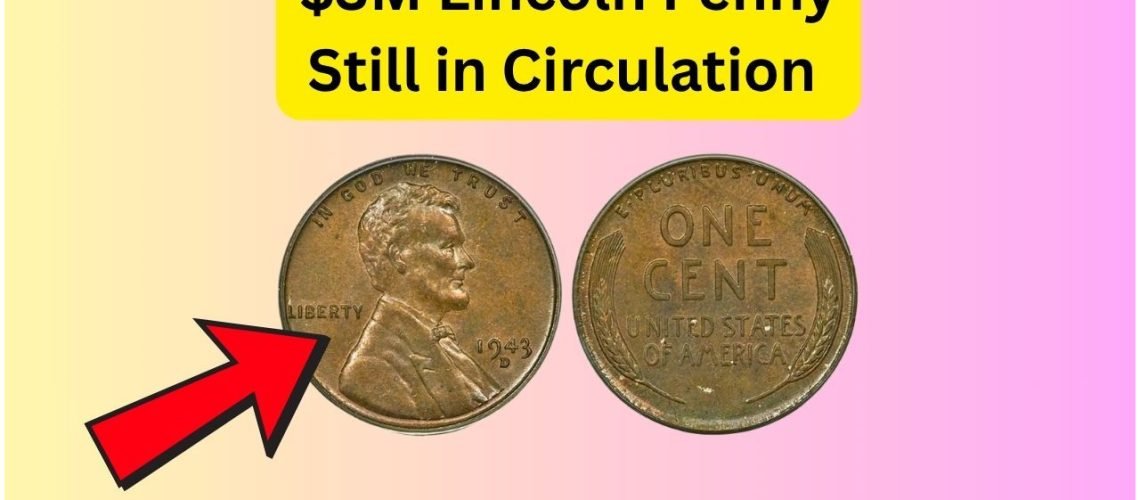Lincoln Wheat Penny Worth Millions:
Table of Contents
Toggle
Understanding the Lincoln Wheat Penny’s Rare Value
Lincoln Wheat Penny Worth Millions: The Lincoln Wheat Penny, a seemingly common piece of currency, can be of immense value. Coin collectors and enthusiasts are often on the lookout for rare coins, and the Lincoln Wheat Penny is one such gem. Its value can skyrocket, especially when certain conditions are met. This penny, first minted in 1909, has a storied history that adds to its allure and potential worth. Understanding what makes a Lincoln Wheat Penny so special and potentially worth a staggering $3,172,500 requires a deep dive into its unique characteristics and historical significance.
- First minted in 1909
- Designed by Victor David Brenner
- Notable for its wheat ears design
- Contains copper, adding to its value
- Rare editions are highly sought after
- Condition and mint mark affect value
- Some editions have unique errors
Key Factors That Drive Value
The value of a Lincoln Wheat Penny can be influenced by various factors. The condition of the coin, known as its grade, plays a critical role. Coins in mint condition, with no signs of wear, are more valuable than those that have been circulated extensively. The presence of a mint mark also adds to a coin’s rarity and value. For instance, pennies minted in San Francisco (marked with an ‘S’) or Denver (marked with a ‘D’) can be worth more due to their limited production runs. Additionally, certain years of production, such as the infamous 1943 copper penny, are considered extremely rare, driving their value into the millions.
- Condition (grade) of the coin
- Mint marks (‘S’ for San Francisco, ‘D’ for Denver)
- Year of minting
- Historical significance
- Unique design features
- Presence of minting errors
Spotting a Valuable Lincoln Wheat Penny
If you’re fortunate enough to come across a Lincoln Wheat Penny, there are several ways to determine its potential value. First, examine the coin for any distinguishing features, such as the mint mark or the year it was minted. Next, assess its physical condition, looking for any signs of wear or damage. Using a magnifying glass can help you spot any minute details or errors that might increase its worth. Comparing your find with online resources or consulting a professional coin appraiser can provide further insights into its value.

Could You Have a $530K Lincoln Wheat Penny in Your Pocket Right Now?
- Check for mint marks
- Identify the year of minting
- Examine the coin’s condition
- Look for unique design elements
- Use online resources for valuation
- Consider professional appraisal
- Research historical context
Historical Context and Rarity
The Lincoln Wheat Penny’s historical context greatly contributes to its value. Introduced in 1909 to celebrate the centennial of Abraham Lincoln’s birth, it was the first U.S. coin to feature a president. The wheat ears on the reverse side symbolize prosperity and are a tribute to Lincoln’s Midwest heritage. Over the years, several editions have gained legendary status among collectors, particularly those with minting errors or limited production. For example, the 1944 steel penny and the 1955 double die penny are highly coveted due to their rarity and the fascinating stories behind their creation.
| Year | Mint Mark | Material | Notable Feature | Estimated Value | Rarity | Historical Significance |
|---|---|---|---|---|---|---|
| 1909 | VDB | Copper | Designer initials | $1,000+ | High | First year of issue |
| 1943 | None | Steel | Copper error | $100,000+ | Extremely high | Wartime production |
| 1955 | None | Copper | Double die | $50,000+ | High | Famous mint error |
| 1944 | D | Steel | Error production | $75,000+ | Very high | Post-war transition |
| 1914 | D | Copper | Low mintage | $150,000+ | High | Scarcity |
| 1922 | No D | Copper | Missing mark | $80,000+ | High | Minting error |
| 1931 | S | Copper | Limited issue | $120,000+ | Medium | Depression-era |
| 1909 | S VDB | Copper | Limited release | $700,000+ | Exceedingly high | Collector’s favorite |
Appraising Your Lincoln Wheat Penny
For those who suspect their Lincoln Wheat Penny might be valuable, an appraisal is the next logical step. Appraisals can be conducted by professional numismatists who have the expertise to assess the coin’s condition, rarity, and historical significance. They often use specialized tools and industry knowledge to determine a coin’s grade accurately. Furthermore, they can provide insights into recent auction results, which can give a clearer picture of the penny’s current market value. Having an appraisal can not only confirm a coin’s worth but also help in making informed decisions about selling or insuring the penny.
- Seek a professional appraisal
- Understand grading scales
- Research past auction results
- Consider insurance for valuable coins
- Explore selling options
- Document provenance if possible
- Evaluate market trends
Notable Lincoln Wheat Penny Sales
| Year Sold | Coin Type | Sale Price |
|---|---|---|
| 2010 | 1909-S VDB | $1,200,000 |
| 2013 | 1943 Bronze | $1,700,000 |
| 2016 | 1955 Double Die | $250,000 |
| 2018 | 1944 Steel | $408,000 |
| 2020 | 1914-D | $160,000 |
| 2022 | 1922 No D | $80,000 |
Protecting Your Investment
Once you’ve identified and appraised a valuable Lincoln Wheat Penny, protecting this investment is crucial. Proper storage is essential to prevent damage. Coins should be kept in a controlled environment, away from moisture and extreme temperatures. Using coin holders or albums can help protect them from physical damage and corrosion. Additionally, maintaining detailed records of your coin collection, including purchase information and appraisals, can be advantageous for future sales or insurance purposes. It’s also wise to stay informed about market trends and potential buyers to ensure the best return on investment.
- Store coins in a controlled environment
- Use protective coin holders
- Maintain detailed records
- Insure valuable coins
- Stay informed about market trends
- Evaluate potential buyers
Exploring the Market for Rare Coins
The market for rare coins, including the Lincoln Wheat Penny, is dynamic and can be highly lucrative. Collectors and investors alike are drawn to the potential of finding a rare gem among everyday pocket change. Understanding the nuances of this market is essential for anyone looking to buy or sell rare coins. Staying updated with auction results and market analyses can provide valuable insights. Joining collector clubs and forums can also be beneficial, offering opportunities to connect with other enthusiasts and experts who can share knowledge and advice on the ever-evolving world of numismatics.

Is the $9.6 Million Lincoln Wheat Penny Still Circulating Among Us?
- Understand market dynamics
- Track auction results
- Join collector clubs
- Engage in forums
- Connect with experts
- Explore investment opportunities
FAQs on Lincoln Wheat Pennies
What makes a Lincoln Wheat Penny valuable?
Various factors, including its mint year, mint mark, condition, and any unique features or errors, can make a Lincoln Wheat Penny valuable.
How can I determine the grade of my Lincoln Wheat Penny?
Grading can be done by assessing the coin’s condition, often requiring an expert’s evaluation to accurately determine its grade.
Where can I sell a rare Lincoln Wheat Penny?
Rare pennies can be sold at numismatic auctions, through coin dealers, or via online marketplaces specializing in rare coins.
Are Lincoln Wheat Pennies a good investment?
If you have a rare or high-grade penny, it could be a worthwhile investment due to the potential for significant value appreciation over time.
How can I protect my valuable Lincoln Wheat Penny?
Store it in a controlled environment using protective holders and consider insuring it to safeguard your investment.
Disclaimer: This article is written for general informational purposes only. Please get the latest and accurate information from the official website.










